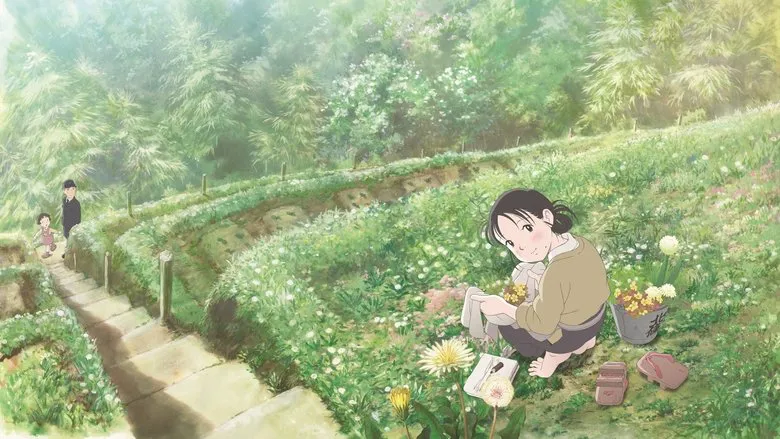Delving into In This Corner of the World: A Critical Perspective
Released in 2016, In This Corner of the World is a Japanese animated film that unveils the life of Suzu Urano, a young woman residing in Eba, Hiroshima. Directed and co-written by Sunao Katabuchi alongside Chie Uratani, the film immerses us in Suzu’s world, defined by her passion for drawing. In 1944, at the age of 18, she marries and embraces the role of a full-time housewife in Kure, a city situated 20 kilometers from her hometown. Despite the apparent lack of excitement, Suzu diligently prepares meals for her husband, finding solace in the simple rhythms of daily life.
However, Kure, being a major naval base, becomes a repeated target of air raids as the war intensifies. The film offers a poignant view as Suzu witnesses the infernos consuming warships and the streets blanketed in ash from her balcony. Even as her cherished possessions are gradually stripped away by the relentless march of war, she clings to hope and resilience. The story then progresses into the fateful summer of 1945, a period of profound transformation and reckoning. While seemingly presenting a heart-wrenching anti-war message through the mundane aspects of daily existence, the film arguably steers clear of addressing Japan’s accountability in World War II.
The Illusion of Innocence and the Avoidance of Complicity
By focusing on the perspective of an “innocent” protagonist—an ordinary woman with a penchant for drawing—the narrative seemingly avoids grappling with Japan’s active role in initiating the war. This manufactured “innocence” skillfully circumvents the core reasons for the conflict, depicting a pre-war Japanese society that borders on utopian. The undercurrent of propaganda, disguised as peaceful and benign, raises complex questions about truth and manipulation.
Whether through deliberate whitewashing or motivated avoidance, the film engenders a false sense of idyllic normalcy, ultimately sidestepping a more nuanced and historically accurate portrayal.
Shifting the Narrative: Victim or Aggressor?
As the war escalates, the film’s focus transitions from depicting the routines of daily life to illustrating the devastating heartbreak of loss and the relentless struggle for survival. While intending to underscore the anti-war sentiment through the eyes of everyday citizens, this narrow focus inadvertently risks portraying Japan as an innocent victim of aggression, obscuring its broader role in the conflict.
While the suffering of the Japanese people during the war is undeniably true, the film’s core narrative runs the risk of overshadowing the critical acknowledgment that Japan also acted as an aggressor. The film poignantly captures the genuine nature of suffering and critically reflects on the brutality inherent in war, yet it inadequately addresses the war of aggression, which is stained with innocent blood.
Addressing the Unspoken Truths of War
Ideally, a Japanese animated film centered on World War II should openly address the immense suffering endured by other nations, striving for an honest and objective depiction of that era. Instead of solely attributing the hardships of war to innocent victims, the film would ideally reflect on Japan’s role in initiating the conflict and offer a comprehensive explanation to the public.
One would expect that the film would explore how the pre-war Japanese government encouraged its citizens to participate in the so-called righteous war, leading to widespread support. It’s disheartening that these aspects are seemingly completely forgotten.
Ultimately, an anti-war message that avoids confronting the fundamental sins that started the conflict rings hollow.
Instead, it relies on deceptively portraying the nation as an innocent victim with great meanings. Ignoring the deep, systemic problems of war gives the movie only a shallow victory.